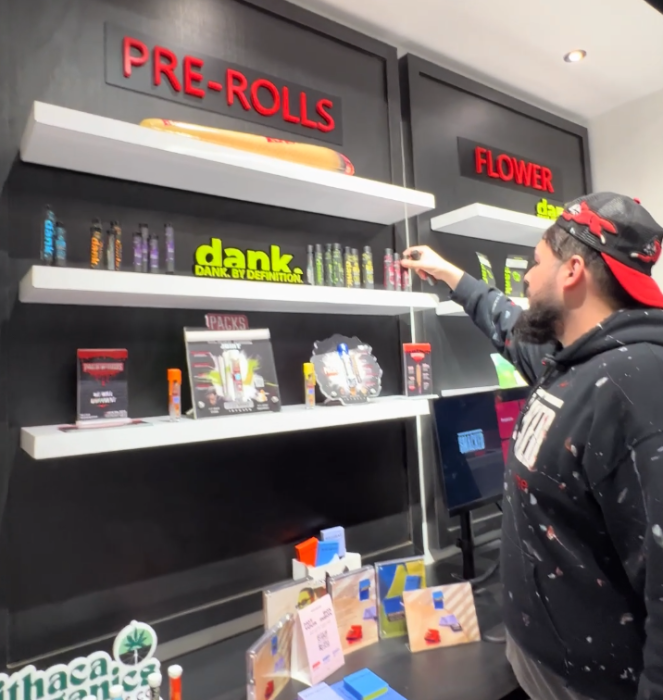By Alex Berger
A – Akahai (Kindness and tenderness).
L -Lokahi (Unity and harmony).
O – Olu'olu (Agreeable and pleasant).
H – Ha'aha'a (Humility and modesty).
A – Ahonui (Patience and perseverance).
As temperatures here on the North Atlantic coast drop below freezing, I thought it would be a good time to share with you some of the adventures Gloria and I had this past summer in the balmy climate of the North Pacific.
We spent 19 days heeding the beckoning call of the blue-green waters, soft sands, warm tradewinds and natural beauty of Hawaii. We visited four islands in a whirlwind, vacation-of- a-lifetime, experience.
We were charmed by the friendliness and sophistication of the people. We were intoxicated by the natural beauty of the landscape. And, our palates were delighted by the native cuisine in the fine restaurants.
But I will not write about Kauai's Fern Garden; Puff the Magic Dragon's “Land of Hanalei” and its one-lane bridges where drivers meticulously obey the unique traffic laws or face the wrath of the locals who will give them the “stink eye.” I will not write about Maui's Ocean Center, and its “Sunrise Adventure” atop the Haleakala Crater. I will not write about the Big Island of Hawaii's volcanoes; the Kona coffee; and the origin of the Hawaiian shirt. Nor will I write about Oahu's Waikiki Beach or its Polynesian culture Center. None of these will I write about. Instead, I will write about the 19th day – our visit to Pearl Harbor.
As a World War II history buff, I knew that I couldn't leave Hawaii without seeing Pearl Harbor and, especially, the U.S.S. Arizona (and its 1,102 American sailors entombed within its hull), lying on the bottom of the Bay at Oahu. Fortunately we had booked a late flight home so there was time to take a three-hour boat tour, highlighted by a spin around the sunken ship.
The day was bright and sunny, and the passengers (many of whom were Japanese) were in a holiday mood. A Hawaiian band played music for the passengers who wanted to dance, while others played shipboard games as the boat steamed towards the Arizona.
When we neared the fallen vessel, flower wreaths and leis were distributed to each passenger. Then, as we inched closer, everyone rushed portside to view the submerged battleship – its top deck very visible below six feet of shallow, clear water. Oil was still oozing from its mass.
The cruise ship then slowed down to allow the dropping of the flowers and leis into the water. At that moment, the loud speaker played “Taps” and the visitors all kept silent. Tears flowed from the eyes of the American as well as Japanese passengers. A Japanese woman even held Gloria's hand as they both wept openly.
I couldn't believe that under that submerged top deck were 1,102 mostly teenaged American boys, trapped in a watery grave. Only 75 bodies were ever recovered for regular burial. The frozen-in-time setting was surreal, and yet, so current. It didn't seem possible that we were seeing the dreadful aftermath of an event that occurred 59 years ago.
When we returned dockside, I told Gloria that I must revisit Pearl Harbor to see the famous 184-foot, U.S.S. Arizona Memorial, which was built atop the vessel and spans the remains of the sunken warship without touching any part of it. “But we can't go,” Gloria said. “We will miss our flight home.”
“I must,” I insisted, and we did.
Entering the gleaming Arizona Memorial Shrine Room, we were led to a marble wall which listed the names of the 1,077 Arizona crewmen killed in the Dec. 7, 1941 attack by the Japanese. These men were sons, husbands, and fathers who would never return to their families. Included were a father and his son, who perished together.
Interestingly, the evening before the Japanese raid there had been a “best band” competition between all the ships moored in Pearl Harbor. The Arizona's band won, but it would never play again. They, and the audience, died the following day when their ship was hit by a 769-pound armor-piercing bomb that slammed through her deck. Of the 96 ships harbored in the bay that morning, 18 were sunk or heavily damaged. The death count was 2,300 with almost half of the casualties on the Arizona. The day that has indeed lived in infamy prompted the United States' involvement in World War II.
Yes, after the tour, we managed to catch our flight home.
I recently asked a group of teenagers what historical event occurred on Dec. 7, 1941 and none knew the answer. I then asked what they knew about World War II. “Not much,” one replied “Only that it began when the Americans dropped an atom bomb on Japan.”
During the war, a patriotic song of the time was a rouser called “Let's Remember Pearl Harbor.” Unfortunately, through the years, many of us forget to remember.
Aloha, brave sailors of the Arizona, the U.S.S. Cole, and all the other men and women killed at sea. Sleep well.

































